Medical Tourism in Colombia
Read more


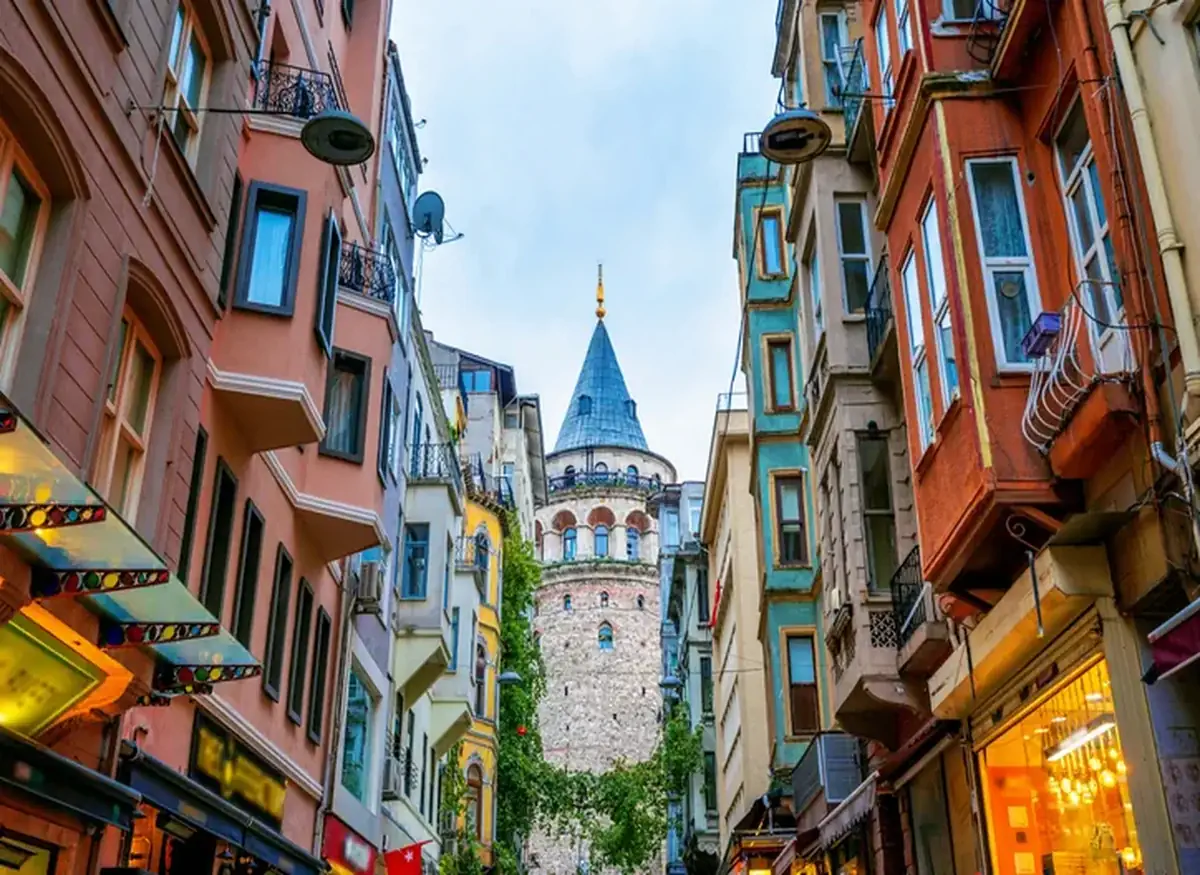
Editor’s Note: This article is based on personal experience, independent research, and firsthand observations. Some experiences or products featured may be gifted or discounted for the purpose of review, but we select providers and experiences independently. We are not medical professionals, and nothing shared here should be taken as medical advice. Some links in this article may be affiliate links, meaning we may earn a small commission if you choose to book or purchase through them. This comes at no extra cost to you and helps support our independent reporting.
Walk down any tourist street in Istanbul, and you'll likely spot travelers with bandaged heads enjoying their vacations. For many, leaving the trip with a new hairline is a much more memorable way to mark the trip than buying a rug or box of baklava.
In the United States, the average cost for a hair transplant is about $6 per graft. For those with significant hair loss needing 4,000 to 6,000 grafts, the total can climb quickly.
In contrast, prices for hair transplants in Türkiye often range from $2,000-$4,000 USD for 2500 grafts, and that typically includes hotel accommodations and airport transfers.
It’s easy to see how this combination of affordability and upscale clinics makes Türkiye an increasingly popular destination for those considering hair restoration. But lower cost doesn’t always mean better care.
We decided to fly to Istanbul ourselves to see what the experience was really like, and to ask the big question: is the total cost of the trip worth it in the end?
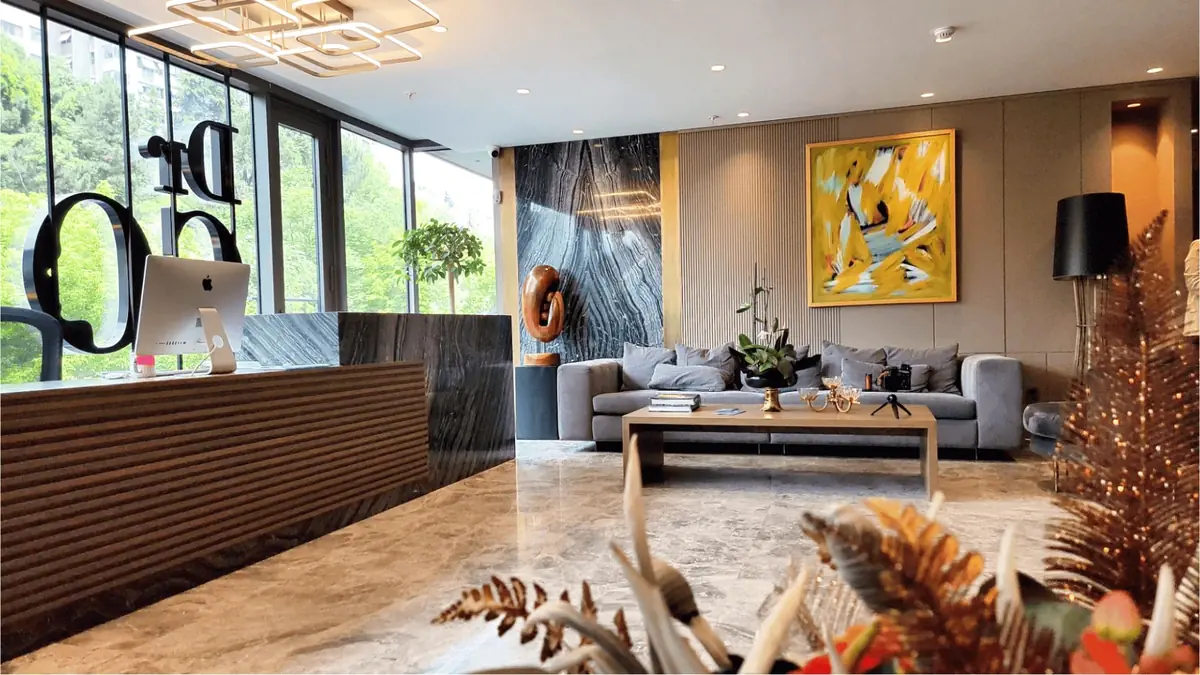
Hair transplant clinics are easy to find in Istanbul, almost too easy.
A quick search on Google brings up hundreds of options, many with glowing five-star reviews and dramatic before-and-after photos. But when every clinic appears perfect on the surface, it becomes difficult to tell which ones actually deliver on their promises.
For this trip, we started where most people do: Google, Trustpilot, and WhatClinic.
We cross-referenced clinics across platforms to look for consistency in reviews, checked their digital presence (including how recently they posted, how they responded to patient questions, and how transparent they were about pricing), and searched for red flags, like fake or identical reviews, or overly aggressive advertising.
We’re not medical professionals, but we’ve navigated our own health and wellness treatments abroad before.
Still, we strongly encourage anyone considering medical care abroad to do their own extensive research. What worked for us might not work for everyone, and when it comes to your health, it’s worth taking the time to get it right.
We ended up landing on one clinic that stood out to us due to its in-depth reviews. These weren’t surface-level testimonials, they were full breakdowns of the experience.
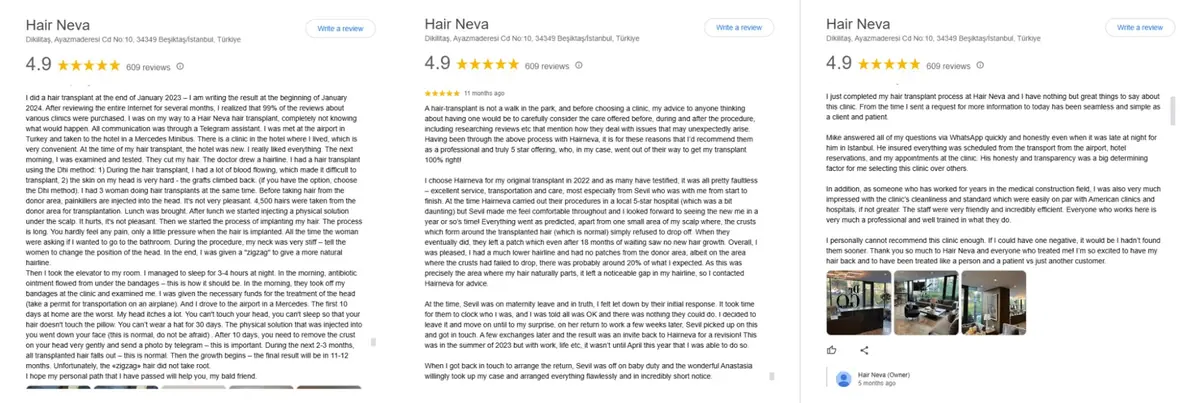
We reached out to Hair Neva directly to request a tour, and they welcomed us in to meet the team.
We were impressed by how open they were to letting us explore the clinic, speak with the doctor, and see the facility for ourselves. That kind of transparency isn’t something every clinic offers.

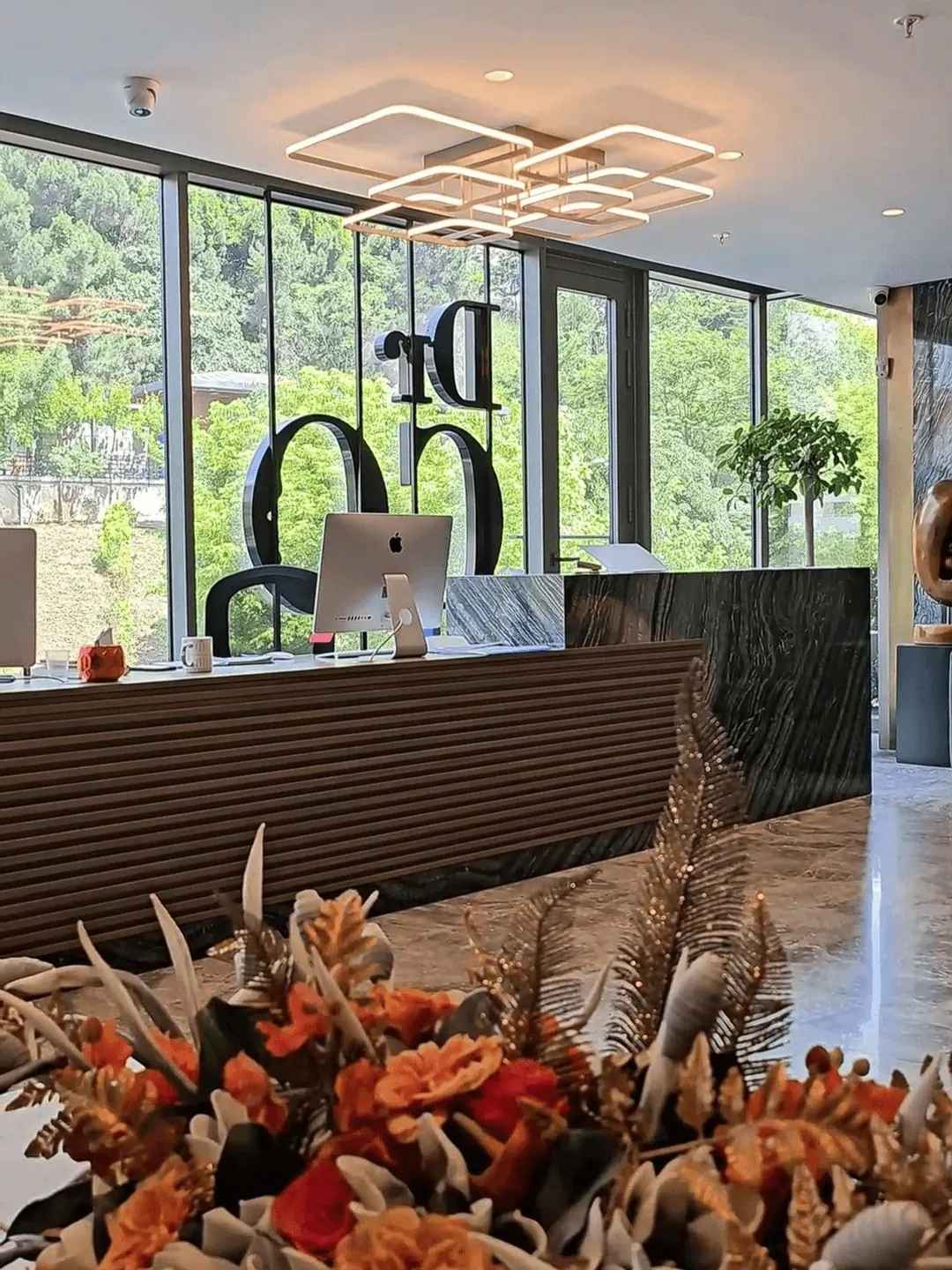
Upon our arrival, we were a little surprised to find that Hair Neva is located on the entire second floor of a Marriott Executive Apartments building. Yes, inside a Marriott!
You walk past the concierge, take the elevator like you’re heading to the gym or business center, and step into a fully equipped medical clinic.
I couldn’t help but wonder: What kind of vetting process does Marriott use before allowing a medical clinic to operate in one of its buildings?
It’s not what we picture when we think of a medical facility.
The vibe is quiet, polished, even luxurious. There's a Starbucks and a small grocery store just downstairs, room service, nearby restaurants, and a calm energy that makes the space feel more like a wellness retreat than a clinic.
When we arrived, we checked in at the front desk and sat down beside a few international patients in the lobby, one with the telltale padded headband, another getting ready for their consultation.
Hair Neva is one of many clinics in Türkiye offering bundled packages for international patients that include airport pickup, hotel accommodations, and the full procedure. But what impressed us about this setup is how contained it is.
Patients fly in, check into the room upstairs, take the elevator down for their procedure, and recover just a few floors away.
There’s no bouncing between clinics, hotels, or unfamiliar neighborhoods. Everything is in one place. If patients need anything, they’re a quick elevator ride from the people who just performed the treatment.
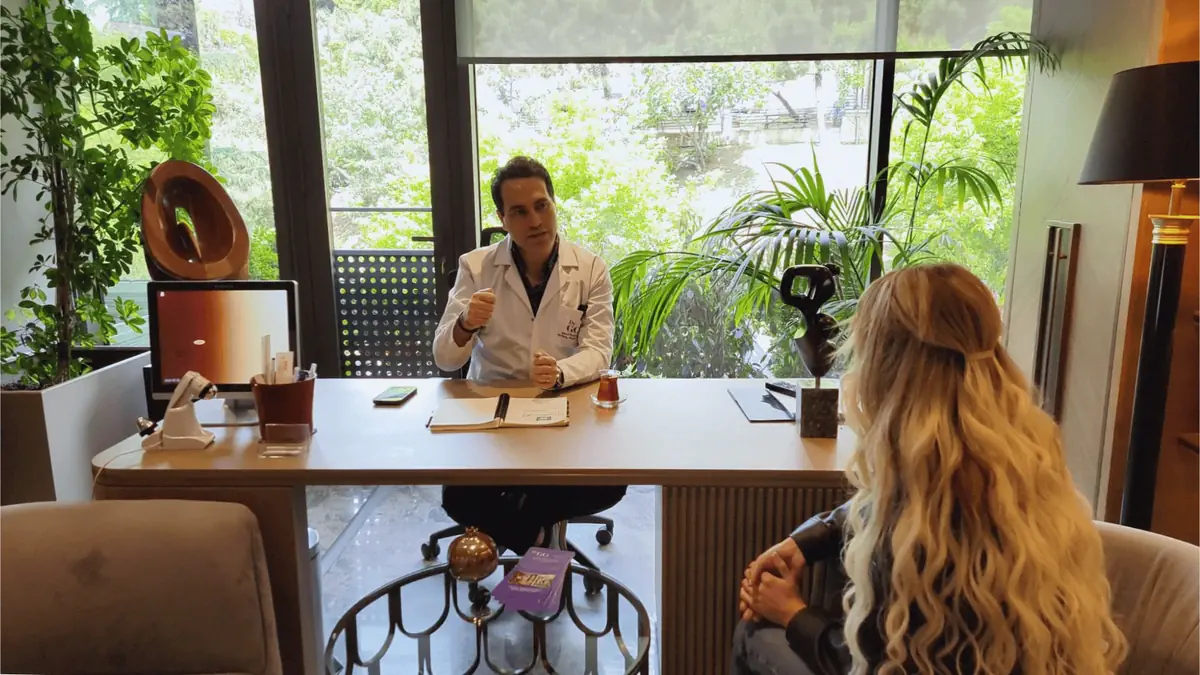
Hair Neva is led by Assoc. Prof. Dr. Güncel Öztürk, a European Board Certified Plastic Surgeon with more than 15 years of experience in reconstructive and aesthetic surgery.
He completed his medical degree at Istanbul University Cerrahpaşa Medical Faculty, one of Türkiye’s oldest and most established institutions, and went on to complete specialized training in aesthetic surgery, with fellowships and experience at institutions like Yale University and the University of Miami.
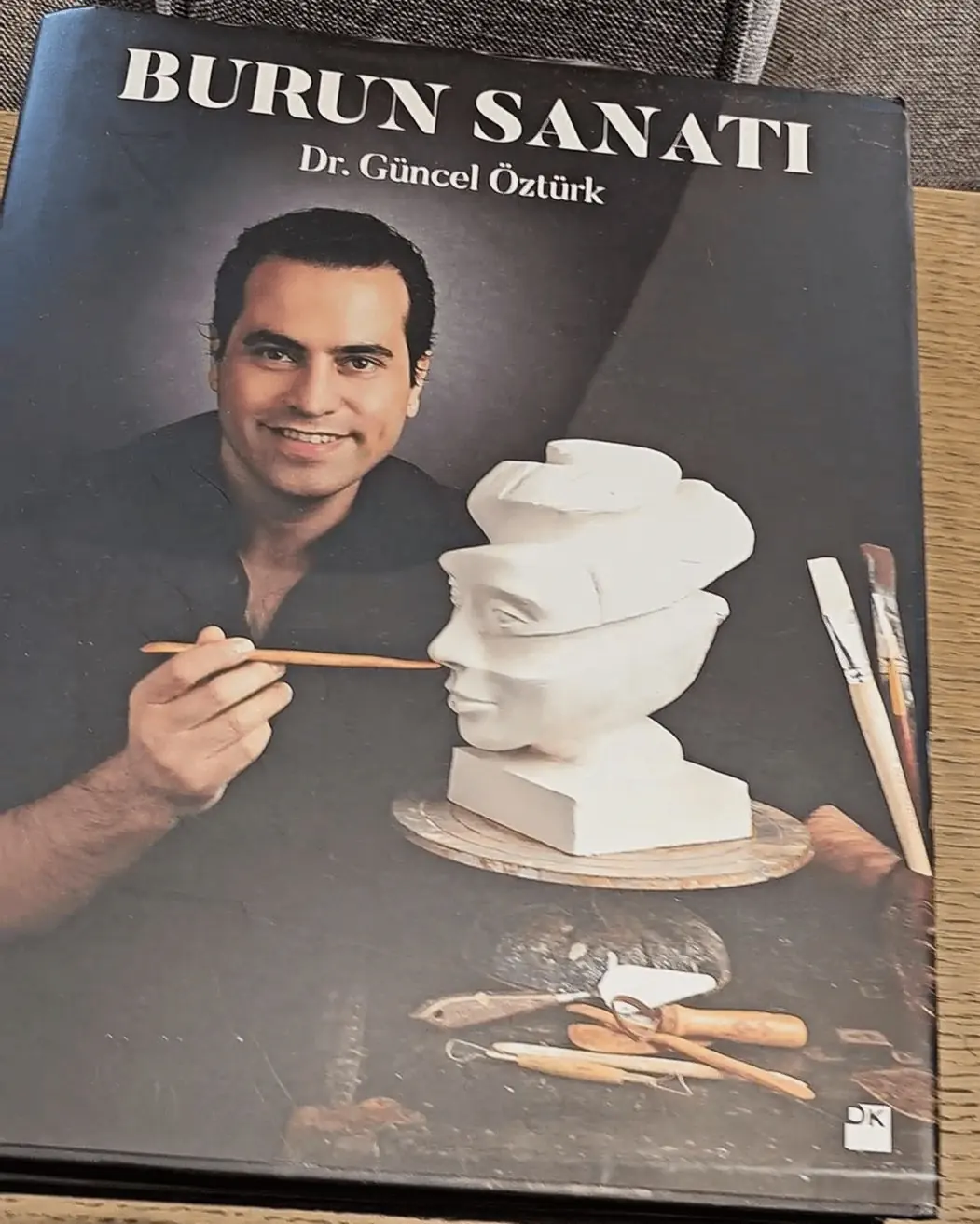
In addition to his clinical work, he’s published books on aesthetic surgery and sculpting, which we saw in the lobby, but this trip was solely about hair transplants.
At his clinic, Dr. Öztürk told us he is responsible for designing the hairline and determining the number and placement of grafts.
That’s a crucial part of the procedure, especially when it comes to getting a natural-looking result. From there, the surgical team steps in.
Like many clinics in Türkiye, Hair Neva operates with a hybrid model: the doctor creates the plan, and trained technicians perform the majority of the actual transplant work, including graft extraction and implantation.
This setup isn’t unusual. In fact, it’s the norm in most Turkish hair transplant clinics. But the skill and experience of those technicians can vary widely, and it’s something prospective patients should always ask about.
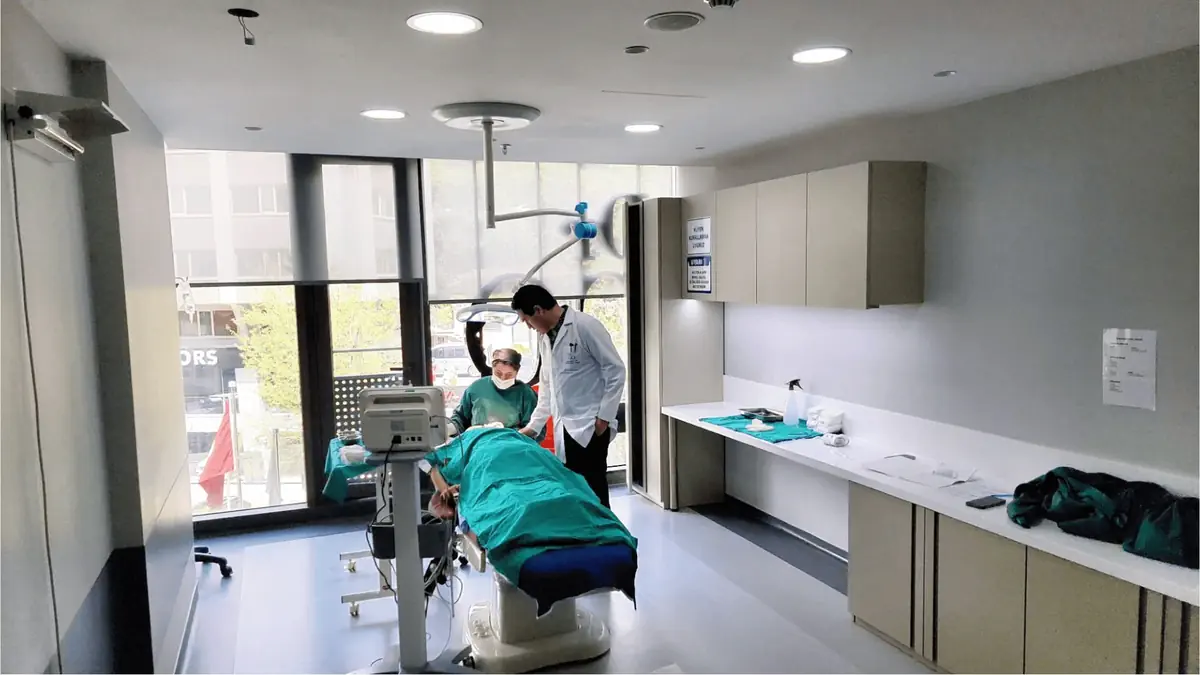
We had a chance to speak briefly with Dr. Öztürk during our tour and found him to be direct and knowledgeable.
He walked us through the patient experience from consultation to aftercare, and explained how his team structures each case depending on the patient’s hair loss pattern and donor area quality.
One thing Dr. Öztürk emphasized during our visit is that hairline design is far from one-size-fits-all. “Every patient is different,” he told us. “We use the muscle movement around the forehead, like when you raise your eyebrows, to help determine where the natural frontal line should fall.” This approach, he explained, helps ensure the hairline looks natural, even as the patient ages.

For most international patients, the experience at Hair Neva starts before they even land in Türkiye.
Initial consultations are done remotely, with patients submitting photos of their scalp so the team can evaluate their hair loss pattern, donor area, and whether they’re a good candidate for the procedure.
Once confirmed, patients are scheduled for their procedure and booked into a full-service package that includes airport pickup and hotel accommodations.
Upon arrival, patients will meet with Dr. Öztürk for a final consultation and hairline design session. “We check their scalp, muscle movement, and facial proportions,” he explained. “We show the patient their natural line and ask if that’s suitable for them.”
Procedures are usually done the following day using the FUE (Follicular Unit Extraction) method.
The doctor designs the plan and supervises the work, while trained technicians carry out the extraction and implantation of grafts, a process that can take 6 to 10 hours, depending on the number of grafts. Patients return for a post-op checkup before flying home.
Most stay in Türkiye for three to five days in total. Full recovery takes time, but the early healing process is straightforward. Shedding typically occurs around the one-month mark, followed by regrowth starting around month three or four.
While most of the hands-on work is done in a single day, results take time to appear. According to Dr. Öztürk, “By six months, you can see about 90% of the result. At nine months, 95%. After one year, it’s complete.”
In addition to setting realistic expectations around results, Dr. Öztürk emphasized the clinic’s commitment to follow-up care, something especially important for international patients who may not be able to return immediately.
“We follow them,” Dr. Öztürk said of their post-op care. “Each week, each month. We ask for pictures from the front side, the back side, and the [right and left] side.”
He explained that if patients have concerns with density or donor area regrowth, they offer support remotely and sometimes bring them back for follow-up treatment if needed.
.png)
.png)
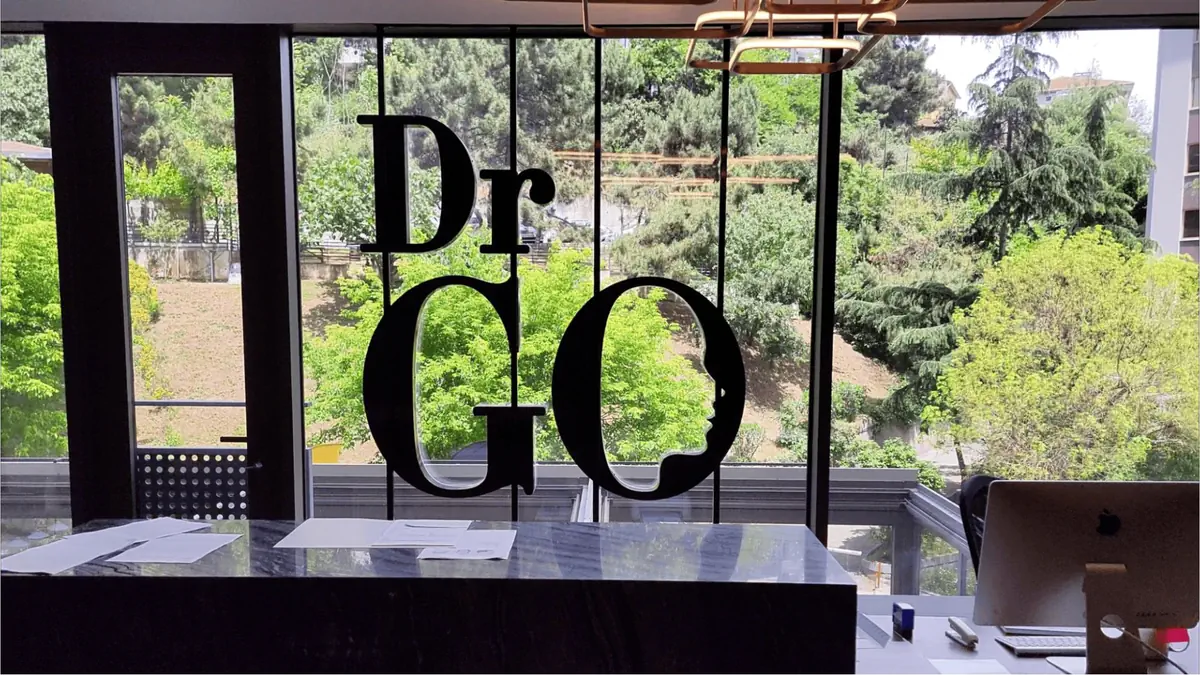
At the time of our visit, Hair Neva offered multiple package options designed specifically for international patients. One included 2,500 grafts, airport pickup, and hotel accommodations at the Marriott and costs between $2,000-$4,000 USD.
Another included up to 3,000 grafts for $2,100-$5,800 USD. The price varies based on the hair transplant technique used, and whether patients opt to include lodging at the Marriott.
Compared to U.S. prices, the cost difference is significant.
In the United States, a hair transplant can range from $18,000 to $30,000 or more, depending on the technique used (FUE, FUT, or DHI), the number of grafts, and the clinic location.
That price usually doesn’t include consultation fees, aftercare, or medications, and it definitely doesn’t include a hotel.
Even with the added costs of traveling abroad, we found that the total still comes in far below what most U.S. clinics charge for the procedure alone.
A round-trip flight to Istanbul from the U.S. typically runs between $700 and $1,200. Factor in meals, local transportation, and a few extra nights at the hotel if you want to do some sightseeing, and travelers are looking at an additional $300 to $500.
In most cases, the full trip still lands at half, or even a third, of what you'd pay for the same procedure back home.
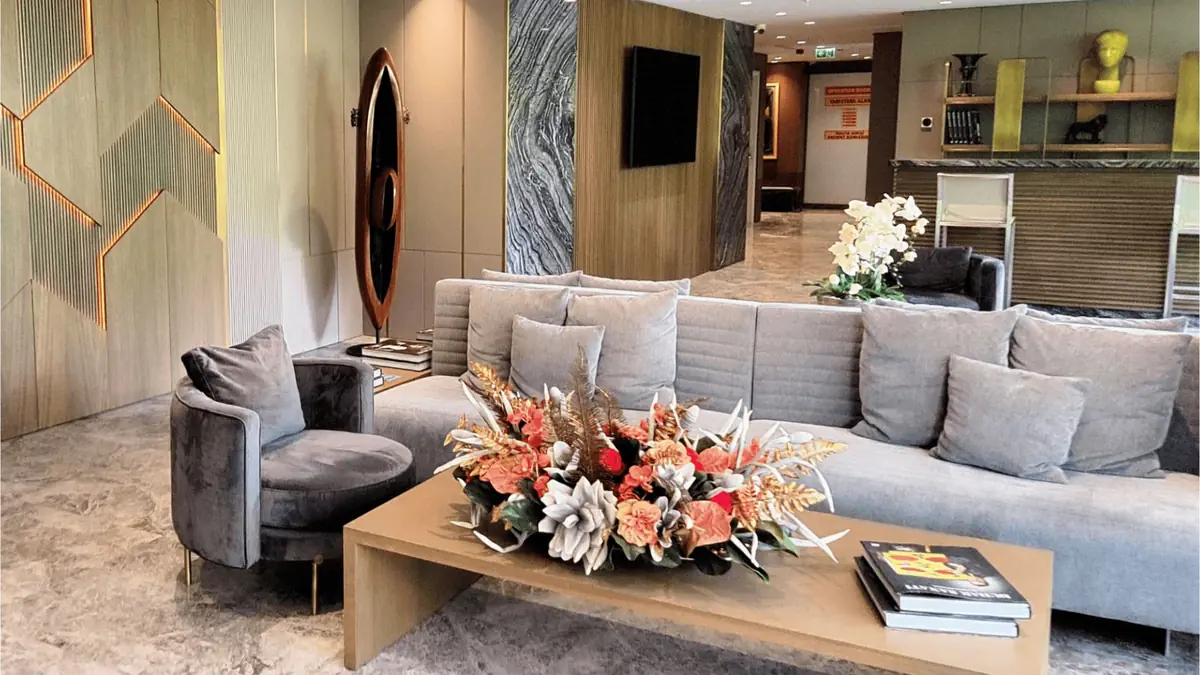
Hair transplant clinics in Türkiye attract a broad demographic of patients, and Hair Neva is no exception.
During our visit with Dr.Öztürk we got a behind-the-scenes look at the facility. “Today we had a doctor from the U.S. come in,” Dr. Öztürk mentioned during our visit. “We see patients from all over, Europe, the Middle East, and the U.S.”
Türkiye has become a high-volume destination for hair transplantation, performing tens of thousands of procedures annually.
While the majority of patients are men experiencing androgenetic alopecia (commonly known as male-pattern baldness), clinics also report treating women and older patients seeking solutions for thinning or receding hairlines.
Many are first-time medical travelers unfamiliar with how treatment abroad works, but are drawn in by the transparency of all-inclusive pricing and the high number of procedures performed in cities like Istanbul.
This growing international demand has shaped the way clinics like Hair Neva operate.
Many now structure their services to meet the expectations of medical tourists, offering multilingual staff, bundled recovery packages, and clearly defined timelines that allow patients to return home within a few days.
“Most of our patients are coming here for the first time,” Dr. Öztürk said. “They don’t always know what to expect, so we make sure everything is clear, accommodation, procedure, follow-up. We try to keep it simple.”
While individual experiences vary, the diversity of backgrounds and motivations among patients is a consistent feature of hair transplant clinics across Türkiye.
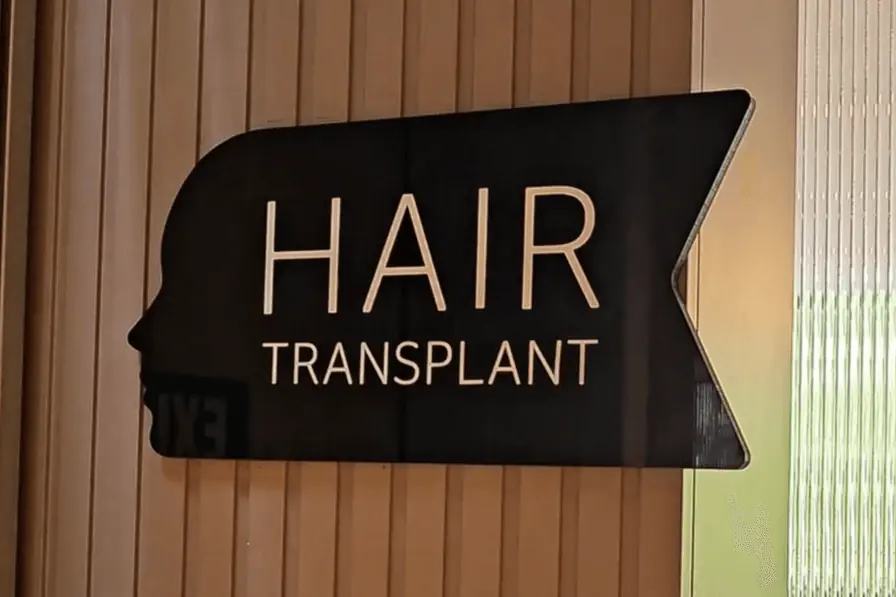
Hair transplants might be marketed as minimally invasive, but that doesn’t mean they’re low maintenance. Recovery is real.
In the first few days, you can expect swelling, scabbing, and some redness across both the donor and recipient areas. Around the 2-3 week mark, most of the transplanted hairs fall out (yes, that’s supposed to happen). New growth typically begins around the 3-4 month point, but full results can take up to a year or longer.
Not everyone is a perfect candidate for a single-session fix, either.
Some people, especially those with more advanced hair loss or limited donor areas, may need a second procedure later on to increase density or fill in areas that didn’t respond as fully.
Many clinics in Türkiye will offer two-session package pricing upfront for this reason.
It’s also important to understand how the actual procedure is performed. In most clinics, including those in Türkiye, the role of the doctor is to design the hairline, build the treatment plan, and supervise the operation.
The grafts are then extracted from the donor area (usually the back and sides of the scalp) and implanted in the thinning areas, but this hands-on work is typically carried out by a team of technicians, sometimes referred to as "hair techs."
This workflow isn’t specific to Türkiye. It’s common globally, especially in high-volume clinics that perform multiple procedures per day. But the skill of those technicians has a direct impact on your results.
Graft survival rates, proper angling, and consistent density all depend on precise handling, which is why the technician team’s experience and training really matter.
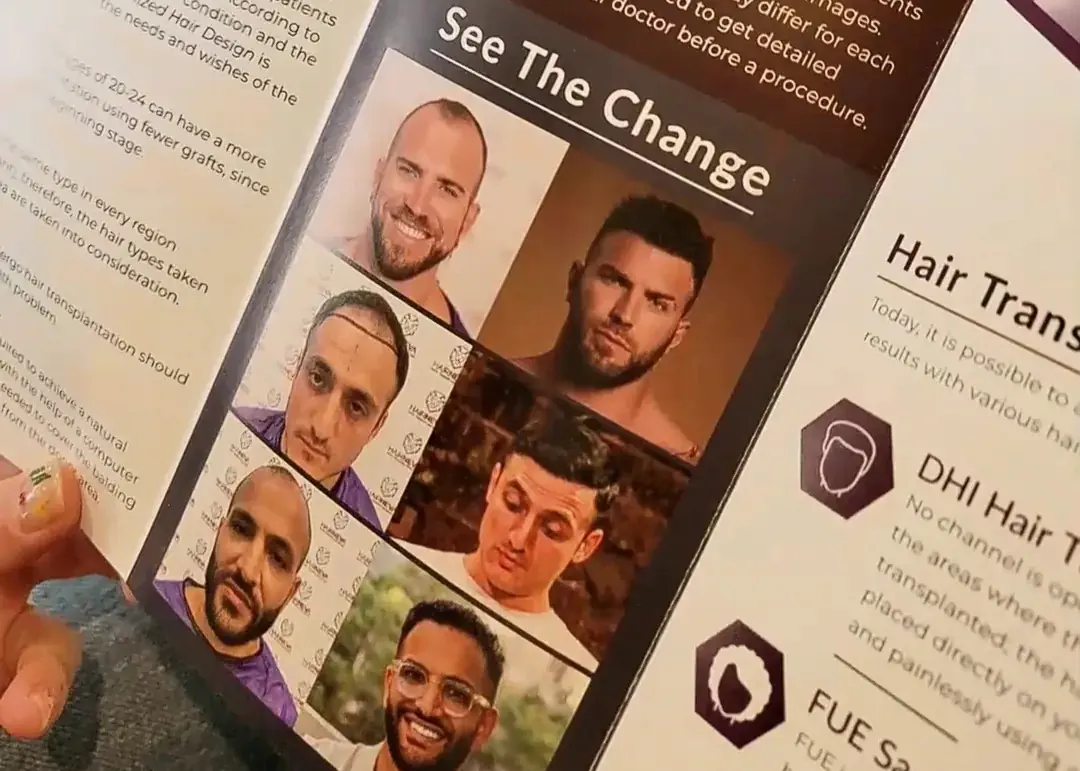
While the division of labor is standard, what matters most is the quality and consistency of the team.
“Harvesting is a step-by-step process,” Dr. Öztürk said. “If it’s done too quickly or incorrectly, it can burn or damage the follicles.”
This kind of attention to detail, he noted, is critical to long-term growth and graft survival.
Another factor to consider is clinic volume.
Türkiye is known for performing more hair transplants annually than nearly any other country in the world, but that also means quality varies from clinic to clinic.
Some facilities perform dozens of procedures per day with rotating staff and minimal oversight. Others limit themselves to only a few patients per day to ensure more focused care.
Lower cost doesn’t automatically mean lower quality, but it does mean you’ll need to look a little closer at how that cost is achieved.
Is the pricing competitive because the clinic is efficient and high-volume? Or because they cut corners on technician experience, patient education, or follow-up care?
Ultimately, hair transplants can be a great option when done well, but they are still surgery.
Understanding the recovery timeline, the division of labor during the procedure, and the questions to ask during your research can make a huge difference in both your experience and your results.
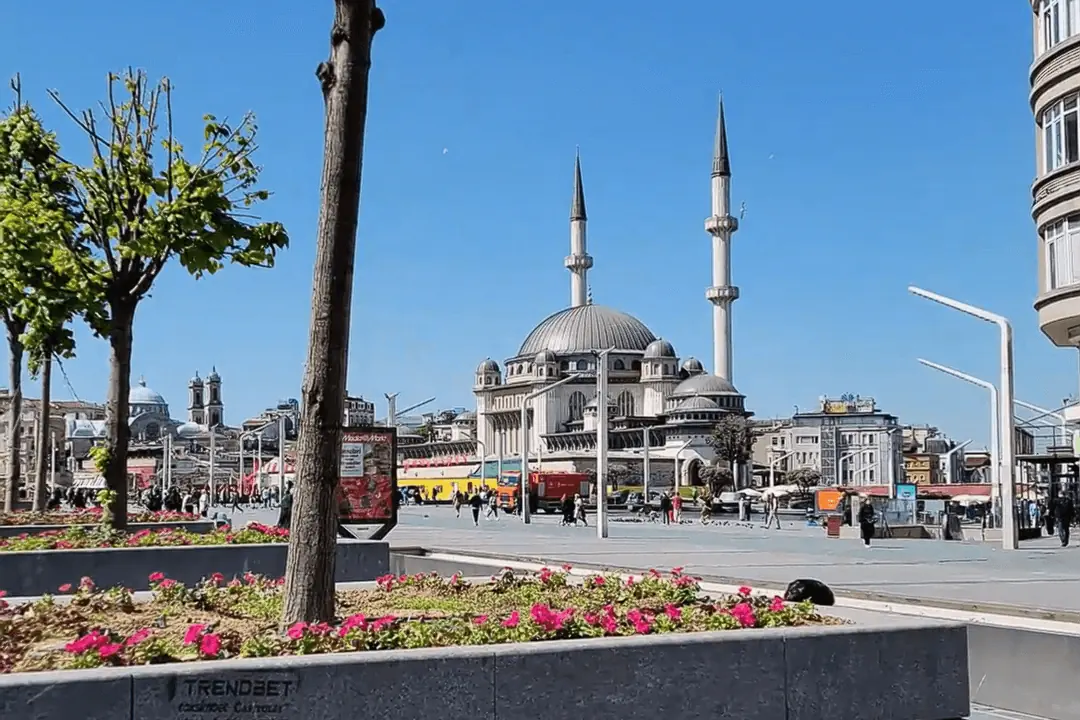
Türkiye’s booming medical tourism sector is part of a larger shift: people are no longer accepting overpriced or inaccessible care as their only option.
They’re getting on planes, doing their research, and finding solutions that actually work for them. And for anyone considering the trip, it’s not about chasing the cheapest clinic, it’s about asking the right questions, understanding the trade-offs, and making an informed decision based on your own research
We’ll keep exploring the world’s top health destinations, meeting with providers, and sharing what we learn from trying treatments firsthand, not as medical professionals, but as curious, cautious, and informed travelers. Our goal is simply to document the experience and give you the kind of details we always wish we had before making a decision.
Next stop in Türkiye? We’re visiting the dentist. Thanks for following along with our journey.
Disclosure: This article is based on personal experience, independent research, and firsthand observations. We are not medical professionals, and this content is not intended to provide medical advice, diagnose conditions, or recommend specific treatments. Every person’s health situation is different, and outcomes can vary. If you are considering any medical or cosmetic procedure, whether at home or abroad, please consult with a licensed healthcare provider or specialist to determine what is appropriate for your individual needs. All information shared here is intended for general informational purposes only.